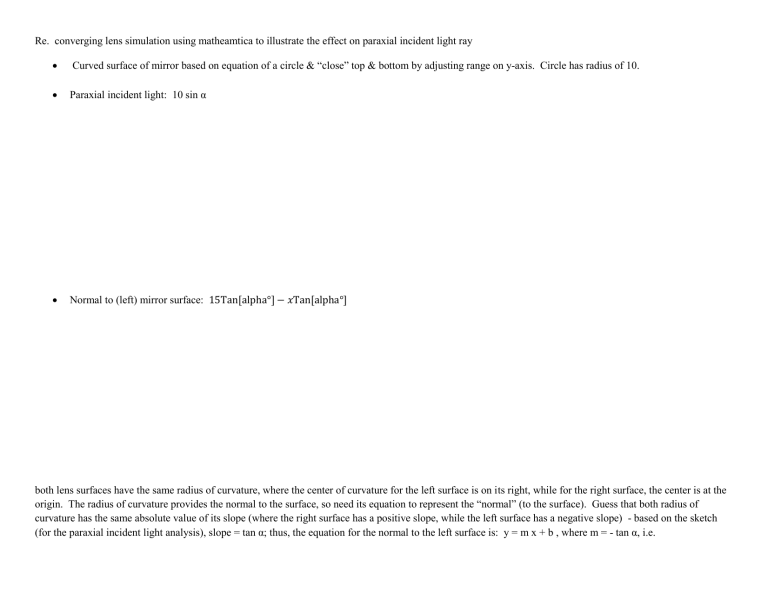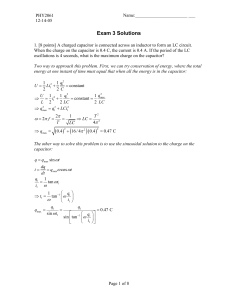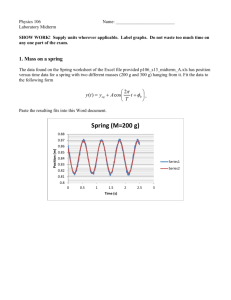algorithm - Chem-is

Re. converging lens simulation using matheamtica to illustrate the effect on paraxial incident light ray
Curved surface of mirror based on equation of a circle & “close” top & bottom by adjusting range on y-axis. Circle has radius of 10.
Paraxial incident light: 10 sin α
Normal to (left) mirror surface: 15Tan[alpha°] − 𝑥Tan[alpha°] both lens surfaces have the same radius of curvature, where the center of curvature for the left surface is on its right, while for the right surface, the center is at the origin. The radius of curvature provides the normal to the surface, so need its equation to represent the “normal” (to the surface). Guess that both radius of curvature has the same absolute value of its slope (where the right surface has a positive slope, while the left surface has a negative slope) - based on the sketch
(for the paraxial incident light analysis), slope = tan α; thus, the equation for the normal to the left surface is: y = m x + b , where m = - tan α, i.e.
y = (- tan α) x + b at the x-intercept,
0 = - 15 tan α + b thus, y-intercept = 15 tan α hence, the equation that describes the normal to the left surface y = - tan α x + 15 tan α
refracted light within the lens; the notation of angles in preceding and subsequent analysis do not necessarily refer to the same angles.
Based on the law of refraction n1 sin α = n2 sin β rearrangement yields,
sin 𝛽 = 𝑛1 𝑛2
sin 𝛼
= 𝑛1 𝑛2
sin 𝛾
= 𝑛1 𝑛2 ℎ𝑒𝑖𝑔ℎ𝑡
[recall: radius (of curvature) = 10; eqn 1].
10
The slope of the refracted light
- cot (θ + β) where 𝜃 = 𝑐𝑜𝑠
−1
( ℎ𝑒𝑖𝑔ℎ𝑡
10
) 𝛽 = 𝑠𝑖𝑛 −1 (sin 𝛽) [eqn 2] substituting eqn 1 into eqn 2,
𝛽 = 𝑠𝑖𝑛 −1 ( 𝑛1 𝑛2 ℎ𝑒𝑖𝑔ℎ𝑡
10
) .
As such, the equation of the refracted light y = - cot [yuk] x + b.
Recall that the equation for the normal, y = (- tan α) x + 15 tan α and the equation for the paraxial light y = 10 sin α where both “lines” would intersect at
10 sin α = (- tan α) x + 15 tan α solving for x, 𝑥 = 15 − sin 𝛼 tan 𝛼
.
.
In addition to the intersection of the normal and paraxial light, the refracted light, whose equation is y = (- cot [yuk] ) x + b [eqn 3] would also intersect at this point; thus, this equation, at this point (of intersection) is
10 sin α = - cot [yuk] { 15 −
10 sin 𝛼
} + b tan 𝛼 solving for the y-intercept, b 𝑏 = 10 sin 𝛼 + (15 −
10 sin 𝛼 tan 𝛼
) cot[𝑦𝑢𝑘] substituting into eqn 3 y = (- cot [yuk]) x + {10 sin 𝛼 + (15 −
10 sin 𝛼
) cot[𝑦𝑢𝑘]} tan 𝛼
= (- cot [θ + β]) x + {10 sin 𝛼 + (15 −
10 sin 𝛼
) cot[θ + β]} tan 𝛼
= (- cot [ 𝑐𝑜𝑠 −1 ( ℎ𝑒𝑖𝑔ℎ𝑡
10
) + 𝑠𝑖𝑛 −1 ( 𝑛1 𝑛2 ℎ𝑒𝑖𝑔ℎ𝑡
) ]) x +
10
{10 sin 𝛼 + (15 −
10 sin 𝛼
) cot[𝑐𝑜𝑠 tan 𝛼
−1
( ℎ𝑒𝑖𝑔ℎ𝑡
) + 𝑠𝑖𝑛
10
−1
( 𝑛1 𝑛2 ℎ𝑒𝑖𝑔ℎ𝑡
)]}
10
= (- cot [ 𝑐𝑜𝑠 −1 (
10 sin 𝛼
10
) + 𝑠𝑖𝑛 −1 ( 𝑛1 𝑛2
10 sin 𝛼
) ]) x +
10
{10 sin 𝛼 + (15 −
10 sin 𝛼
) cot[𝑐𝑜𝑠 tan 𝛼
−1
(
10 sin 𝛼
) + 𝑠𝑖𝑛
10
−1
( 𝑛1 𝑛2
10 sin 𝛼
)]}
10
= (- cot [ 𝑐𝑜𝑠 −1 (sin 𝛼) + 𝑠𝑖𝑛 −1 ( 𝑛1 sin 𝛼 𝑛2
) ]) x +
{10 sin 𝛼 + (15 −
10 sin 𝛼
) cot [𝑐𝑜𝑠
−1 tan 𝛼
(sin 𝛼) + 𝑠𝑖𝑛
−1
( 𝑛1 sin 𝛼 𝑛2
)]} which is the equation describing the refracted light in the lens
normal to right lens surface to draw the normal to the right lens surface requires an equation describing a straight line going thru the origin, which requires the determination of its slope, which would correspond to the line that passes thru the intersection of the right lens surface & refracted light in the lens. That is, solve for (x, y) in the following system of equations 𝑦 = √100 − 𝑥 2 y = (- cot [ 𝑐𝑜𝑠 −1 (sin 𝛼) + 𝑠𝑖𝑛 −1 ( 𝑛1 sin 𝛼
) ]) x + {10 sin 𝛼 + (15 − 𝑛2
10 sin 𝛼
) cot [𝑐𝑜𝑠 tan 𝛼
−1 (sin 𝛼) + 𝑠𝑖𝑛 −1 ( 𝑛1 sin 𝛼 𝑛2
)]} for the top right lens surface (for the bottom right lens surface, simply multiple by -1) and refracted light in the lens, respectively. Due to the ugly math in solving this problem, I’ve used mathematica to solve this problem (i.e. to find the intersection between the right lens surface & refracted light in the lens). Unfortunately, as there are 2 solutions, where I am unable to “teach” the program to select / use the appropriate solution - the user has to enter these values. That is, select the solution pair, whose quotient is positive or negative, when the paraxial incident light ray is in the 2 nd or 3 rd quadrant, respectively .
The output of version 1 (shown below) is less distracting than version 2 (shown above), but the input for version 1 is less flexible, i.e. no use of slider & unlikely to work with mathematica player (i.e. have to use mathematica). Unfortunately, for both versions, have to manually insert the appropriate root (to the solution of the intersection of the right lens surface & refracted light in the lens)
refracted light leaving lens; the notation of angles in preceding and subsequent analysis do not necessarily refer to the same angles. find α, the angle between the normal to the right lens surface & refracted light in the lens
1.
1 = tan -1 m
2 = tan -1 m /
2.
90 =
2 +
3
3 = 90 -
2
= 90 - tan -1 m /
3.
90 =
1 +
4
4 = 90 -
1
= 90 tan m
4.
3
4
180
180
3
4
= 180 – (90 - tan -1 m / ) – (90 - tan m )
= tan -1 m / + tan m (note all angles > 0) find beta1, the angle of the refracted light leaving the lens with respect to the normal (see above sketch) based on the law of refraction, n2 sin α = n1 sin β sin 𝛽 = 𝑛2 𝑛1 sin 𝛼 = 𝑛2 sin 𝛼 , since n1 (air) = 1
find the slope of the equation describing the refracted light leaving the lens surface
1.
180 = β +
2
2 = 180 - β
2.
tan
3 = m (i.e. slope of the normal)
3 = tan -1 m
3.
2
+
3 +
4 = 180
4 = 180 -
2 -
3
= 180 - (180 - β) - (tan -1 m)
= β - tan -1 m
4.
4 = tan -1 m / (i.e. slope of refracted light leaving lens) m / = tan
4 m / = tan {β - tan -1 m} find the y-intercept, b, for the equation describing the refracted light leaving the lens surface the intersection (x, y) of the normal (to the right lens surface) and refracted light leaving the lens surface is the same as for the intersection of the normal
(to the right lens surface) and the refracted light in the lens (see section on “normal to lens surface”), so rearrange y = m / x + b to solve for b.
me got “lazy” with updating / revising various screen shots of mathematica code & resultant output. Below are screen shots of most recent versions (file names might change in the future, which won’t be reflected in this document) unlike earlier versions, where the user has to input the appropriate roots to continue, the below version determines it, i.e. much less “bulky”, i.e. “smoother operation” than above versions. Deleted code for “ignore” in 3 sliders – it was unneeded.







